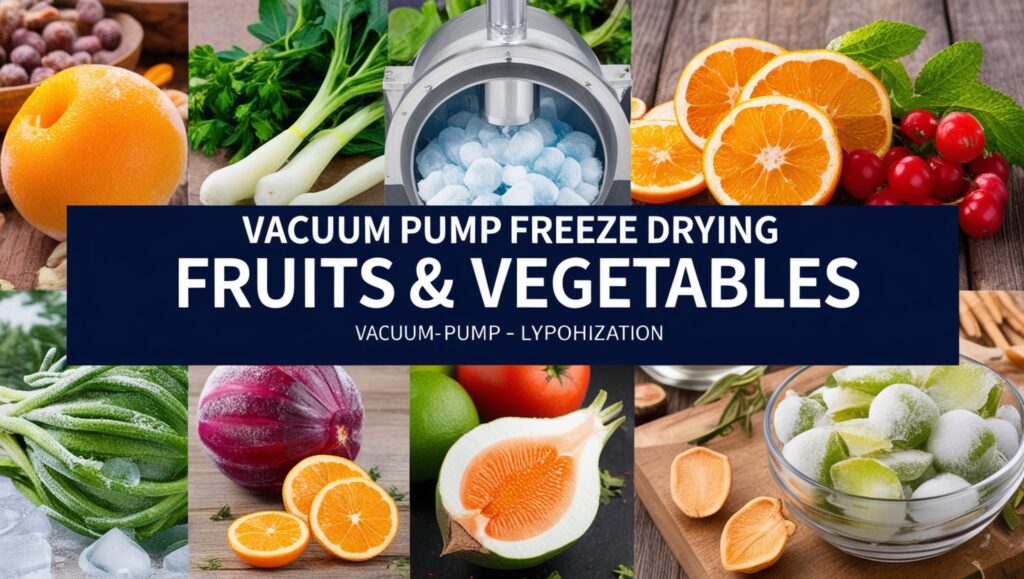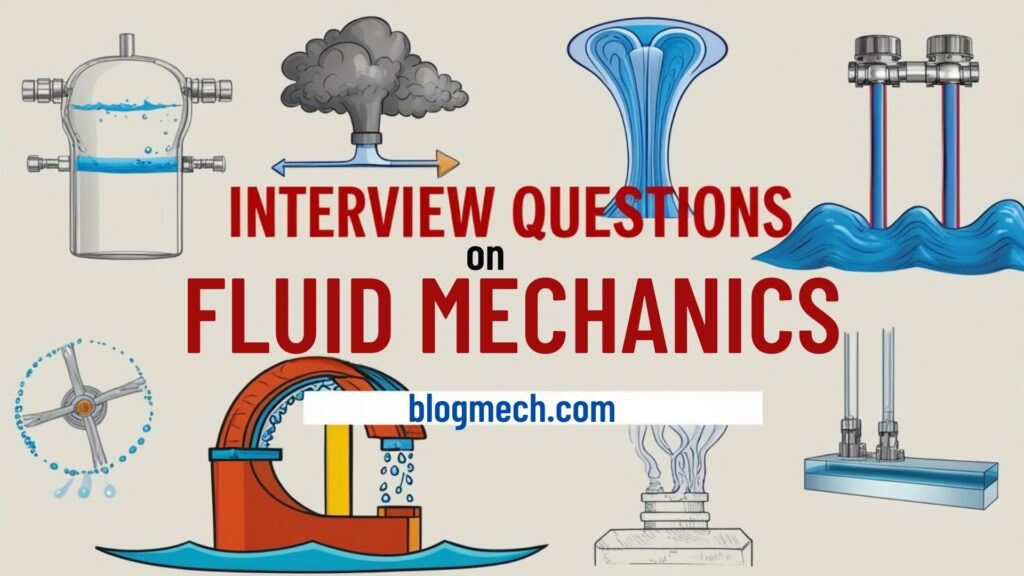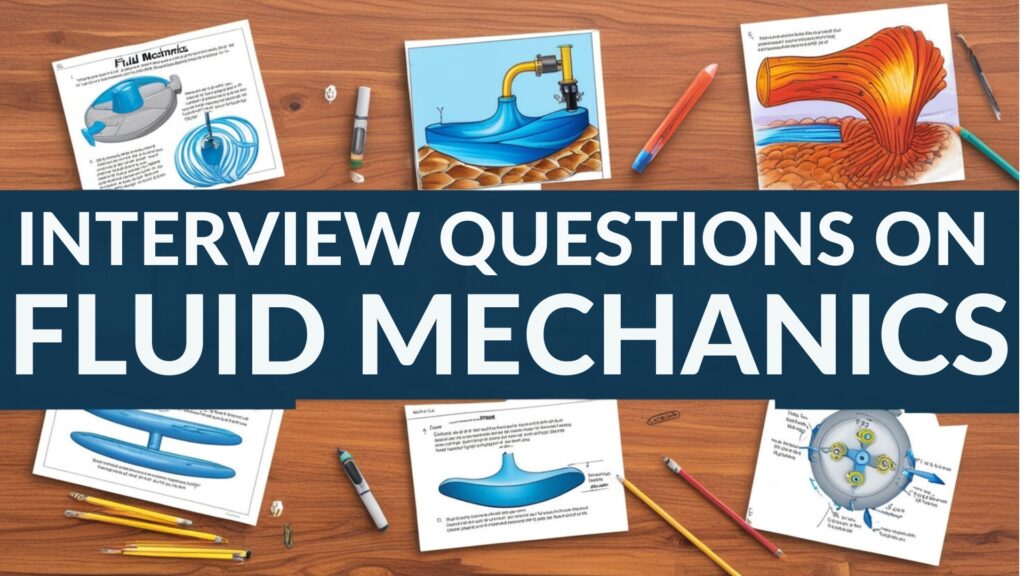
Introduction
Vacuum Pump Freeze Drying Fruits and Vegetables refers to a preservation method that utilizes advanced technology to remove moisture from food items while retaining their flavor, color, and nutritional value. This process, also known as lyophilization, involves freezing the produce, creating a vacuum environment, and allowing ice to sublimate directly into vapor. Notably, vacuum pump freeze drying is distinguished by its ability to extend the shelf life of food significantly, making it ideal for both consumer use and industrial applications. This method caters to growing demands for high-quality preserved foods, appealing to health-conscious consumers and those seeking long-term storage solutions. Historically, food preservation techniques have evolved, with early methods including simple drying practices employed by ancient civilizations.
Freeze drying emerged during World War II, initially aimed at preserving medical supplies, but has since transitioned to a widespread method for preserving various foods. Today, vacuum pump freeze drying stands out for its ability to maintain the structural integrity of fruits and vegetables, which can be particularly beneficial in commercial food production and emergency preparedness situations. Despite its advantages, vacuum pump freeze drying presents challenges, including high initial costs, energy consumption, and the complexity of the operation. The machinery required can be expensive, with home units ranging from approximately $2,000 to $3,500, making it less accessible for some users compared to other preservation methods like dehydrating or canning.
Additionally, while the process preserves the nutritional quality of foods, it can be time-consuming and may result in quality variations based on the type of produce being freeze-dried. As consumer interest in sustainable food practices and health-oriented products increases, the vacuum pump freeze-drying market is poised for growth. Innovations in technology and a shift toward more accessible home-use models are expected to shape the future landscape of food preservation, catering to evolving dietary preferences and the demand for quality preserved foods.
History
The history of food preservation methods, including vacuum pump freeze drying, has evolved significantly over the centuries. The earliest techniques can be traced back to ancient civilizations, where drying was a predominant method. Drying removes moisture from food items such as fruits, vegetables, and herbs, enabling them to be stored for extended periods without spoilage. This method dates back thousands of years and was crucial for the survival of various cultures, including the Incas, who utilized advanced agricultural practices to maximize crop yield and storage techniques.
In the late 18th century, Nicolas Appert revolutionized food preservation with the invention of canning. He developed a method for sealing food in glass jars to prevent spoilage, a breakthrough that laid the groundwork for the modern food preservation industry. Following this, freeze drying emerged during World War II, initially developed to preserve medical supplies. Scientists discovered that freeze-drying, or lyophilization, could significantly extend the shelf life of biological materials by freezing them and then removing the moisture through sublimation, converting ice directly into vapor without passing through a liquid phase.
Over time, both canning and freeze-drying techniques advanced, making them more accessible for home use. Today, vacuum pump freeze drying is a widely used method that combines the benefits of traditional freeze drying with modern technology. This method allows for the efficient preservation of the flavor, color, and nutritional value of various foods, catering to the growing demand for long-lasting and high-quality preserved items.

Mechanism of Vacuum Pump Freeze Drying
Vacuum pump freeze drying is an essential process used to preserve fruits and vegetables by effectively removing moisture while maintaining their structural integrity, flavor, and nutritional content. The mechanism involves several key components and stages, primarily utilizing the principles of freezing, vacuum creation, and sublimation.
The Freeze-Drying Process
The freeze-drying process begins with the freezing of the fruits or vegetables. Once the material is frozen, it is placed in a vacuum chamber, where a vacuum pump creates a low-pressure environment. This reduced pressure lowers the boiling point of water, allowing it to evaporate directly from the solid (ice) state to vapor (sublimation) without transitioning through the liquid phase. This critical step is facilitated by the vacuum pump, which removes air and gases, enabling moisture to escape efficiently.
Role of the Vacuum Pump
The vacuum pump plays a vital role in ensuring the efficiency of the freeze-drying process. By creating a low-pressure environment, it allows water to evaporate at lower temperatures, thereby preventing degradation of the product’s quality due to excessive heat exposure. This not only helps retain the original texture and taste of the fruits and vegetables but also extends their shelf life by minimizing the growth of bacteria and microorganisms.
Types of Vacuum Pumps
Two main types of vacuum pumps are commonly used in freeze-drying applications: oil-free pumps and oil-sealed pumps. Oil-free pumps are generally more expensive but are favored for their lower maintenance requirements and environmental benefits. In contrast, oil-sealed pumps, while more economical, require regular oil changes and maintenance to operate effectively.
Importance of the Vacuum Chamber
In conjunction with the vacuum pump, the vacuum chamber provides a controlled space where sublimation occurs. It must be vacuum-tight to maintain the low-pressure conditions necessary for efficient moisture removal. The chamber houses the sample holders or trays containing the frozen fruits or vegetables, ensuring that they remain at optimal temperatures throughout the drying process.
Process of Freeze Drying Fruits and Vegetables
Freeze drying, also known as lyophilization, is a meticulous process employed to preserve fruits and vegetables while maintaining their nutritional value and flavor. The method involves several key steps that ensure effective moisture removal and product stabilization.
Step 1: Harvesting and Washing
The process begins with the careful selection of fruits and vegetables at their peak ripeness, which is crucial for optimizing flavor and nutrient content. After harvesting, the produce is thoroughly washed to remove any dirt or contaminants.
Step 2: Pretreatment
Before freezing, pretreatment is essential to enhance the quality of the final product. This can involve blanching, where vegetables are briefly submerged in boiling water to halt enzymatic activity, thereby preserving color, texture, and flavor. Additionally, fruits may be treated with acidic solutions, such as lemon juice, to prevent browning and reduce oxidation.
Step 3: Freezing
Once pretreatment is complete, the produce is frozen to very low temperatures, typically between -40 to -50 degrees Celsius. This step is critical as it ensures that sublimation occurs rather than melting during the drying phase. A slow freezing process helps create larger ice crystals, which are beneficial for efficient moisture removal later on.
Step 4: Freeze-Drying
The actual freeze-drying process involves placing the frozen fruits and vegetables in a vacuum chamber. Here, the pressure is lowered, allowing the frozen water within the produce to sublimate directly from ice to vapor without passing through the liquid phase. This step preserves the integrity of the food while effectively removing moisture.
Secondary Drying
After the primary drying phase, a secondary drying phase is performed to eliminate any remaining bound water molecules. During this stage, the temperature is carefully raised under vacuum conditions, allowing for the removal of moisture while avoiding damage to the product. The final residual water content in the freeze-dried food is typically very low, around 1-4%.
Packaging
Once the freeze-drying process is complete, the products are packaged in airtight containers to prevent moisture absorption and ensure long shelf life. The combination of these meticulous steps not only enhances the preservation of fruits and vegetables but also significantly extends their usability in various applications, such as meals or emergency food supplies.

Advantages of Vacuum Pump Freeze Drying
Enhanced Efficiency and Quality
Vacuum pump freeze drying offers several advantages that significantly enhance the efficiency and quality of the preservation process. By creating a low-pressure environment, vacuum pumps facilitate the rapid sublimation of water from the product, allowing moisture to evaporate directly from ice to vapor without passing through the liquid phase. This method considerably reduces drying time, thus improving overall operational efficiency in various industries, including food processing and pharmaceuticals.
Preservation of Nutritional Content
One of the key benefits of using a vacuum pump in freeze drying is the preservation of the nutritional value of the products being processed. The vacuum environment enables moisture removal at lower temperatures, minimizing the degradation of sensitive nutrients such as vitamins. This ensures that the final product retains its original flavor, aroma, and nutritional profile, making vacuum pump freeze drying an excellent choice for health-conscious consumers.
Maintenance of Product Integrity
Vacuum pumps also play a crucial role in maintaining the integrity of the items being freeze dried. By providing precise control over the pressure and temperature within the drying chamber, these pumps help preserve the structure of delicate foods and materials, preventing undesirable changes in texture and appearance. This is particularly important for items like fruits and vegetables, which are often valued for their natural qualities.
Reduced Risk of Microbial Growth
Another significant advantage of vacuum pump freeze drying is the reduction of microbial growth. The low moisture content achieved through the vacuum process inhibits the development of bacteria, yeasts, and molds, which can compromise food safety and quality over time. As a result, vacuum-dried products have an exceptionally long shelf life, often lasting 25 to 30 years when stored properly, making them ideal for long-term storage and emergency preparedness.
Cost Efficiency
In addition to quality preservation, vacuum pump freeze drying can lead to cost savings in production. The rapid drying times and reduced risk of spoilage mean that manufacturers can produce larger quantities of high-quality products in shorter periods, ultimately lowering operational costs and increasing profitability.
Disadvantages and Limitations
Despite the numerous benefits of vacuum pump freeze drying for fruits and vegetables, there are notable disadvantages and limitations associated with the process.
Energy Consumption
Energy consumption is another concern associated with freeze drying. While efforts can be made to optimize energy use, small or medium-sized freeze dryers may consume around 900 watts per cycle. This energy requirement can lead to higher electricity bills, particularly if the machine is used frequently or for long periods.
High Costs
One of the most significant barriers to entry for freeze drying is the high initial investment required. The cost of freeze-drying machines ranges from approximately $1,995 to $3,495, depending on size and features. In contrast, dehydrators are generally much cheaper, ranging from $50 to $600. Furthermore, ongoing operational costs, such as electricity and maintenance, can also add up, making it a less cost-effective option for individuals who do not use the machine regularly.
Limited Processing Capacity
Home freeze dryers often have small batch capacities, typically allowing the freeze-drying of only a cup or two of food at a time unless significantly more expensive, larger units are used. This limitation makes it less feasible for larger families or those looking to process substantial quantities of food in a single cycle. Additionally, smaller models may not be suitable for users with extensive preservation needs, leading to potential inefficiencies.
Time-Consuming Process
The freeze-drying process is inherently time-consuming, often taking several hours or even days to complete for each batch. This extended timeframe can be inconvenient for users who are looking for a quick preservation method, especially when compared to other techniques like canning or dehydrating, which may yield faster results.
Quality Concerns
Although freeze drying preserves nutritional value, certain factors may influence the final product’s quality. For instance, if foods with high water content are processed, the resulting product may have a higher energy density, which could be counterproductive for those monitoring their caloric intake. Additionally, not all foods freeze dry equally well, and some may not retain the desired texture or flavor after the process is complete.
Complexity of Operation
Operating a freeze dryer can also involve a learning curve. Users must understand how to properly prepare foods for freeze drying, manage the machine’s settings, and handle the freeze-dried products effectively. The complexity of operation may discourage some users from fully utilizing the equipment or achieving optimal results.
Applications
Home Use
For home users, freeze dryers have become increasingly accessible, with models designed specifically for domestic applications. These compact units allow individuals to preserve a variety of food items, from fruits and vegetables to complete meals, while maintaining ease of use and user-friendly features. The ability to freeze dry food at home not only fosters self-sufficiency but also enhances culinary creativity by allowing users to experiment with different recipes and preservation methods.
Food Preservation
Freeze drying is widely recognized for its effectiveness in food preservation, allowing for the long-term storage of fruits, vegetables, and meals while maintaining their nutritional quality and flavor. The process involves removing moisture from food items, which inhibits microbial growth and enzymatic activity, thereby extending shelf life without the need for refrigeration. This technique is increasingly utilized by home users who wish to control the quality of their preserved goods and save costs by processing bulk seasonal produce.
Pharmaceutical Development
In the pharmaceutical industry, freeze drying plays a critical role in the formulation of medications, particularly in enhancing the bioavailability of active compounds. The technology is employed to create orally disintegrating tablets (ODTs), which demonstrate rapid disintegration and dissolution rates, thereby improving patient compliance. For instance, studies have shown that freeze-dried ODTs exhibit significantly lower disintegration times compared to directly compressed tablets, making them more effective for drug delivery.
Commercial Applications
Commercial freeze dryers are essential in the food processing industry, as they are designed for high-capacity operations that require continuous and efficient processing of large quantities of food. These machines support various applications, including the production of freeze-dried snacks, ready-to-eat meals, and ingredients for other food products. Their advanced technology enables quick freeze-drying cycles, making them suitable for businesses aiming to preserve food quality while meeting high demand.
Research and Development
Further research in freeze-drying technology is vital for improving process efficiency and product quality across various industries. Ongoing studies are focused on optimizing freeze-drying parameters and expanding the range of products that can be effectively processed, aiming to overcome current limitations and promote broader industrial applications. This continued innovation in freeze-drying techniques holds promise for enhancing both food safety and pharmaceutical efficacy in the years to come.
Comparison with Other Preservation Methods
Vacuum pump freeze drying is one of several food preservation methods, each with its unique advantages and challenges. This method, which involves freezing food and then removing moisture through sublimation, ensures that the original taste, texture, and nutritional value are retained.
Freeze Drying vs. Canning
Canning is a traditional preservation method that offers a long shelf life and helps retain flavors and textures. However, it requires specialized equipment and can be time-consuming. Canning typically involves submerging jars of prepared food in boiling water or using a pressure canner. It is most suitable for high-acid foods like fruits and tomatoes when using water bath canning, while low-acid foods require pressure canning. In contrast, freeze drying does not involve high temperatures, which helps preserve the original nutrients better than canning, although it requires more advanced equipment and a vacuum pump setup.
Freeze Drying vs. Freezing
While freezing is a quick and convenient preservation method that retains the color and nutrients of food, it has limitations such as reliance on electricity and a shorter storage life compared to freeze-dried foods. Foods frozen at low temperatures can experience texture changes upon thawing, while freeze-dried products can often be rehydrated back to their original state. This makes freeze-drying particularly appealing for long-term storage without the need for electricity.
Freeze Drying vs. Dehydration
Dehydration involves removing moisture from food, enhancing flavors and extending shelf life. Unlike freeze drying, which preserves the full structure and nutrients of the food, dehydration may lead to slight nutrient losses due to heat application. While both methods result in lightweight and compact food suitable for storage and transport, freeze-dried food tends to retain more of the food’s original taste and texture compared to dehydrated options. Moreover, freeze-drying typically allows for longer shelf life than dehydrated products.
Future Trends and Innovations
The future of the vacuum pump freeze-drying industry for fruits and vegetables appears optimistic, driven by increasing consumer demand for nutritional foods and growing awareness about food wastage. Research indicates that advanced innovations and product launches are likely to shape the landscape of this market through 2027, particularly in regions such as Asia Pacific and North America, where health consciousness is on the rise due to urbanization and changing dietary preferences.
Technological Advancements
Innovations in freeze-drying technology are crucial for enhancing the quality and nutritional value of preserved foods. For instance, new formulation and production processes are being developed to improve the digestibility and health benefits of freeze-dried vegetables, which is appealing to both consumers and producers alike. Furthermore, the integration of nanotechnology is being explored to extend the shelf life of freeze-dried products, with nanoparticles demonstrating antimicrobial properties that help minimize spoilage.
Market Dynamics
The business-to-consumer (B2C) segment is anticipated to see significant growth, projected at a compound annual growth rate (CAGR) of 8.4% from 2022 to 2030. This growth is fueled by the increasing use of mobile payments and the widespread adoption of digital wallets, which enhance the e-commerce landscape for freeze-dried products. Notably, Asia Pacific accounted for the largest share of the global freeze-dried food market in 2021, reflecting the rising interest among Asian consumers for health-oriented products made from innovative ingredients.
Industry Competition
Leading companies in the vacuum pump freeze-drying sector, such as Mercer Foods, Olam International Limited, and Dohler Gmbh, are heavily focused on product innovation, quality assurance, and sustainability initiatives. This competition is fostering a vibrant marketplace that encourages diversity in product offerings tailored for various applications, including bakery and confectionery, breakfast cereals, and pet food. The presence of both large and small firms in this industry creates a dynamic environment that promotes competitive practices and technological advancements.
Research and Development
Future research efforts are essential to overcome current limitations in freeze-drying processes and to develop industrial-scale applications across a broader range of products. Addressing these challenges through dedicated research and development initiatives is crucial for sustaining growth and meeting evolving consumer demands in the food sector.



